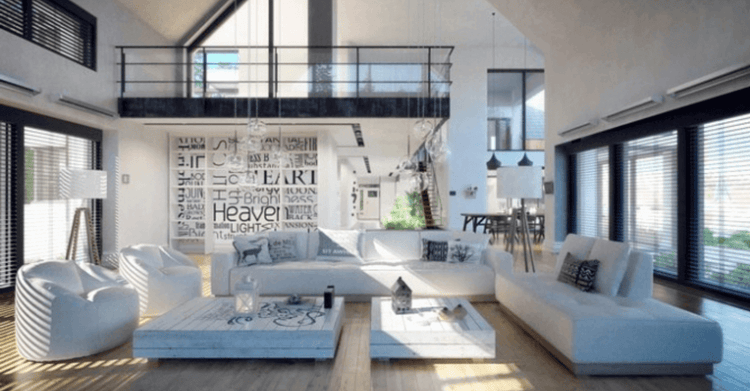"There is nothing worse than spending thousands on a new floor only to have your house sound like a haunted house months later."
Creaky floorboards can occur for many reasons, which can vary depending on the type of flooring you own. If you happen to own a click system floor or a squeaky hardwood floor, then you may have noticed the annoying creaks have got particularly bad during the summer months. During the humid weather, we see a dramatic increase in customers who are experiencing floor squeaks.
From experience, there is nothing worse than spending thousands on a new floor only to have your house sound like a haunted house months later. Assuming you don't need to call pest control (mice make similar noises) and your floor is in good condition with no botched topside repairs (like nails in a floating floor), then finding an easy home repair that won't cost a fortune can be tricky. A quick search on Google will throw up advice that usually includes using a drill bit and screw to secure the subfloor and joists, or drilling pilot holes in your floorboards to fill with glue. Other solutions we often see touted around the internet include using wood screws, a counter snap or a finishing nail to secure the floorboards down.
All of these solutions have a place if you are treading on the original nailed-down floorboards. However, if you have recently had wood floors installed or laminate flooring, you will notice that none of the solutions above will work with a modern click system floating floor. Squeaky wood floors affect both traditional floors and modern click-together (or wood-lock) floors equally but for very different reasons.
So what do you do if your modern floor squeaks, and you are desperate for some squeak relief?
Stop Creak was invented to solve this very problem I had when I was fixing squeaky floors in my own home. The first step is understanding why your floors creak, and then we can explore how to stop the squeak, permanently.
Your new floor was not acclimated properly.
Every building has inherent temperature and moisture levels, and it’s important to allow your new click system flooring to be acclimatized to the environment before installation. If you don’t allow your laminate or engineered floor to properly adjust to the change in temperature, it can expand or contract after installation. Again, this will result in annoying creaks and will get worse and the interlocking sections of the floor wear out.
Solution
You need to lubricate the loose interlocking sections of the floor to fix the squeak. Stop Creak is designed for this very purpose, as the flooring industry has traditionally used complex combinations of wax mixed with chemicals and injected into the floor grooves to achieve the same result.
Your floor was not brought to room temperature slowly from when it was new.
Many of the customers we serve have noticed their brand-new click system wood floor started creaking within months of being laid. Many people think the floor or the materials are faulty, however, in many cases, the correct break-in procedure for the new floor has not been followed. Once your new floor is laid, the heating must be off for at least a day. Then you must turn on the heating at ambient temperature and increase the thermostat by 1 degree per day until you reach the desired temperature, Not following this important procedure will cause the floor to contract too quickly, and it will never return to the shape or size it was when new…and this means creaks – lots of them.
If you have this problem, you will feel the flooring moving under barefoot - especially in the hot summer months. This movement is what is causing the creaking.
Solution
When machinery squeaks you give it oil, so it has never made sense to me when people recommend using the screws or glue to stop creaks in click system floors. These floors want to move more freely, not less, so adding glue to a floating floor is a very blunt way of trying to solve a problem. Stop Creak lubricates these floors, allowing them to move freely underfoot. It is designed to allow your floor to move more, without friction and in harmony with the changing weather conditions.
Poorly Installed Sub-Floor
One of the most common reasons for creaky floorboards is a poorly installed subfloor. If you can access the underside of the subfloor, it can be much easier to identify where the annoying squeaks come from. Usually can be down to lose floor joists or noggins, a loose mounting plate, thin wood shims being used during construction or even occasionally a screw head shearing off and allowing the subfloor to flex and rub up and down the screw itself. We have seen instances where the plywood subfloor has been screwed down with drywall screws and a bead of construction adhesive used along each joist. If you are going to use any kind of glue when fixing a subfloor, we recommend carpenters glue as the way to go. You can also use small amounts to repair the finished floor but we will talk more about that in a later article.
The reason these issues occur is usually down to poor installation or wear and tear. Berry Enterprises make a set of screws designed for this very problem, but you need to make sure you know exactly what you’re doing before driving the screws into your beautiful floor. You will also need some wood filler, a putty knife and some construction adhesive to do this work properly. And o course, you will need to pull the floor up first, which means if you want to stop the squeak you're going to have to invest time! These types of floor repairs are disruptive and this is where squeaky floor repair can get expensive.
Solution
The most common way to get to the source of the squeak is to lift the flooring where the creak is occurring and identify if the sub-flooring requires a few more nails/needs evening out. If you have a click system floor on top, then you have no choice but to pull up your wood flooring to get to the subfloor. It is not a job for the faint of heart!
Incompatible or Cheap Underlay
The third reason for squeaky floors is a lack of underlay between the flooring and subfloor, or the wrong type of underlay being used with the type of flooring or the floor covering. When you fit carpeted floors it can hide a multitude of sins however, because the carpet is soft it tends to deaden and hide these issues better than a click system floor. If the wrong underlay is used with modern wood floors, the annoying squeaks you hear might sound a bit like the balloon being rubbed with the hand which is the sound of the back of the floor panels flexing and rubbing on the underlay. Compressed felt underlay is more expensive and generally doesn't cause these issues. How do you know if you have cheap underlay? Cut it with a utility knife and see if it cuts cleanly and without snagging.
Solution
Stop Creak can help with these floors in some cases however, adding more underlay is quite easy for some flooring, particularly engineered and laminate. Simply remove the flooring and add more underlay by tapping it together. Once the underlay is in situ, you can place the flooring back on top.

